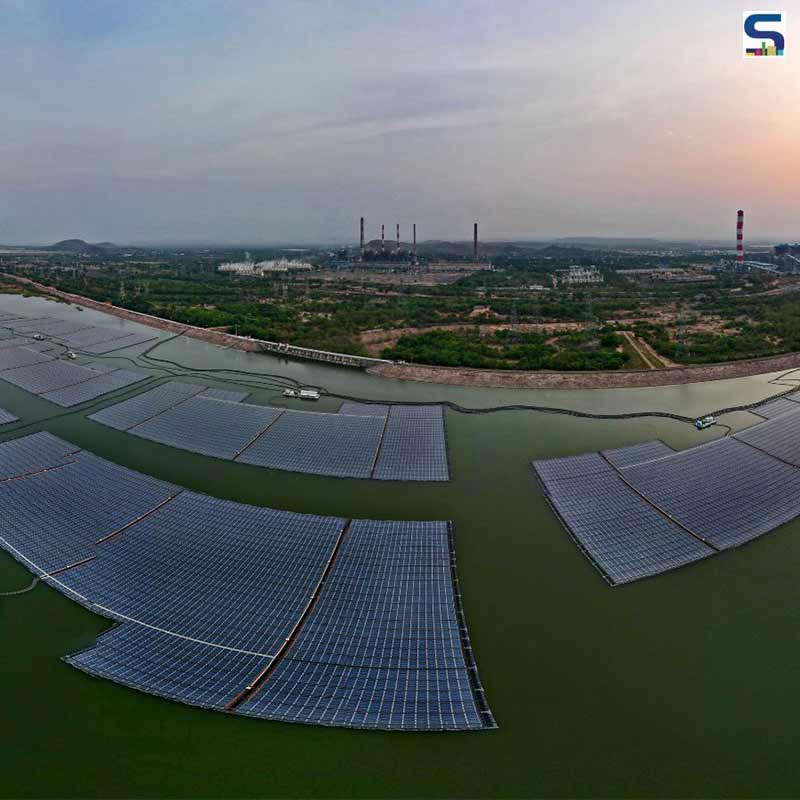
The National Thermal Power Corporations (NTPC) recently announced the commercial operation of the final part capacity of 20 MW out of 100 MW Ramagundam Floating Solar PV Project at Ramagundam, Telangana. Touted to be India’s largest floating solar power project, the 100 MW Ramagundam Floating Solar PV Project is constructed at the cost of Rs 432 crore through Bharat Heavy Electricals Limited on an EPC (engineering, procurement and construction) contract. Know more on SURFACES REPORTER (SR).
Spread over 500 acre of the reservoir, the Ramagundam project is divided into 40 blocks where each block has a capacity of 2.5 MW. Each block consists of a floating platform with an array of 11,200 solar modules. Comprising an inverter, transformer and a high-tension circuit breaker, the floating platforms are manufactured with high-density polyethene material that allows easily floating, irrespective of the water-level fluctuations, thereby making the project unique. The high-modulus polyethylene ropes bear the dead weight of the concrete blocks that are placed on the reservoir bed. The power that is generated is evacuated up to the existing switch yard through 33 KV underground cables.
The floating solar panels are expected to reduce the water evaporation rate to help water conservation. Reportedly, nearly 32.5 lakh cubic meter of water evaporation each year can be easily avoided with the help of this project. This will also reduce the consumption of nearly 165,000 ton of coal every year, thereby avoiding 210,000 ton of carbon emission each year. Unlike ground-mounted solar farms, Ramagundam solar project’s land can be put to better use since the land requirement is minimum.
The NTPC has also announced the commercial operation of 92 MW Floating Solar at Kayamkulam (Kerala) and 25 MW Floating Solar at Simhadri (Andhra Pradesh). With the 100 MW Solar PV Project at Ramagundam, the southern region’s total commercial operation of floating solar capacity has reportedly risen to 217 MW. The public sector power generator aims to produce 60 GW capacity through its renewable energy sources by 2032.
Image credits: PSU Connect